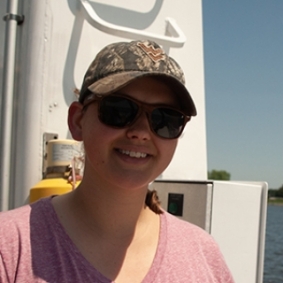Eight students will be presenting the summer work at the Ocean Sciences Meeting in March 2022!
Kristin Ratliff, Frostburg State University
Class Year:
2018Mentor:
Greg Silsbe, Ph.D.Project Title:
Chesapeake Bay Phytoplankton: The Effect of Nutrient Enrichment on Growth Rate During the Summer Months
Abstract:
Phytoplankton are important photosynthetic microorganisms that support aquatic food webs and influence the physical and biogeochemical properties of aquatic ecosystems. This project examined how nitrogen, phosphorus, and light regulated phytoplankton growth rates during summer months in the Chesapeake Bay. Water samples from a mesohaline monitoring station and the Choptank River were collected monthly, incubated, and analyzed to assess how phytoplankton respond to experimental enrichment of nitrogen and phosphorus by using both flow cytometry and chlorophyll concentrations. Growth rates between 0 and 1.0 day-1 in the Bay and 0.5 and 2.0 day-1 in the Choptank River were observed. Comparing growth between treatments showed no statistically significant differences, suggesting light limitation. However, large within treatment variations revealed a need for more rigorous methodology moving forward. As growth rates are measured into the future, Chesapeake Bay models can be evaluated for accuracy, thus improving predictions of nutrient management plans seeking to improve water quality and ecosystem services.



